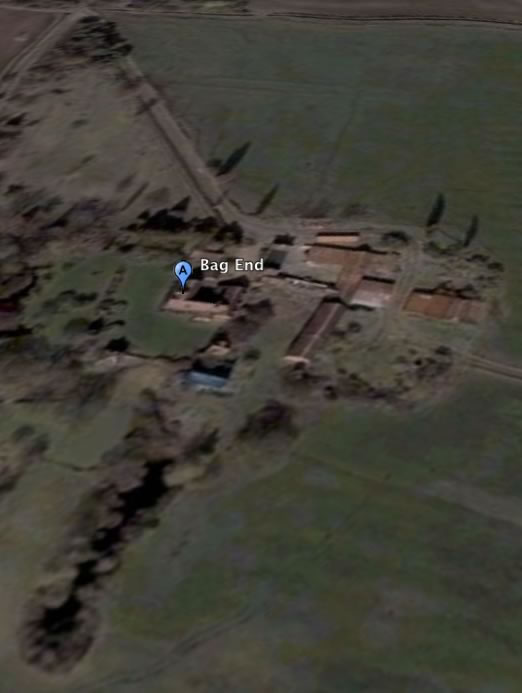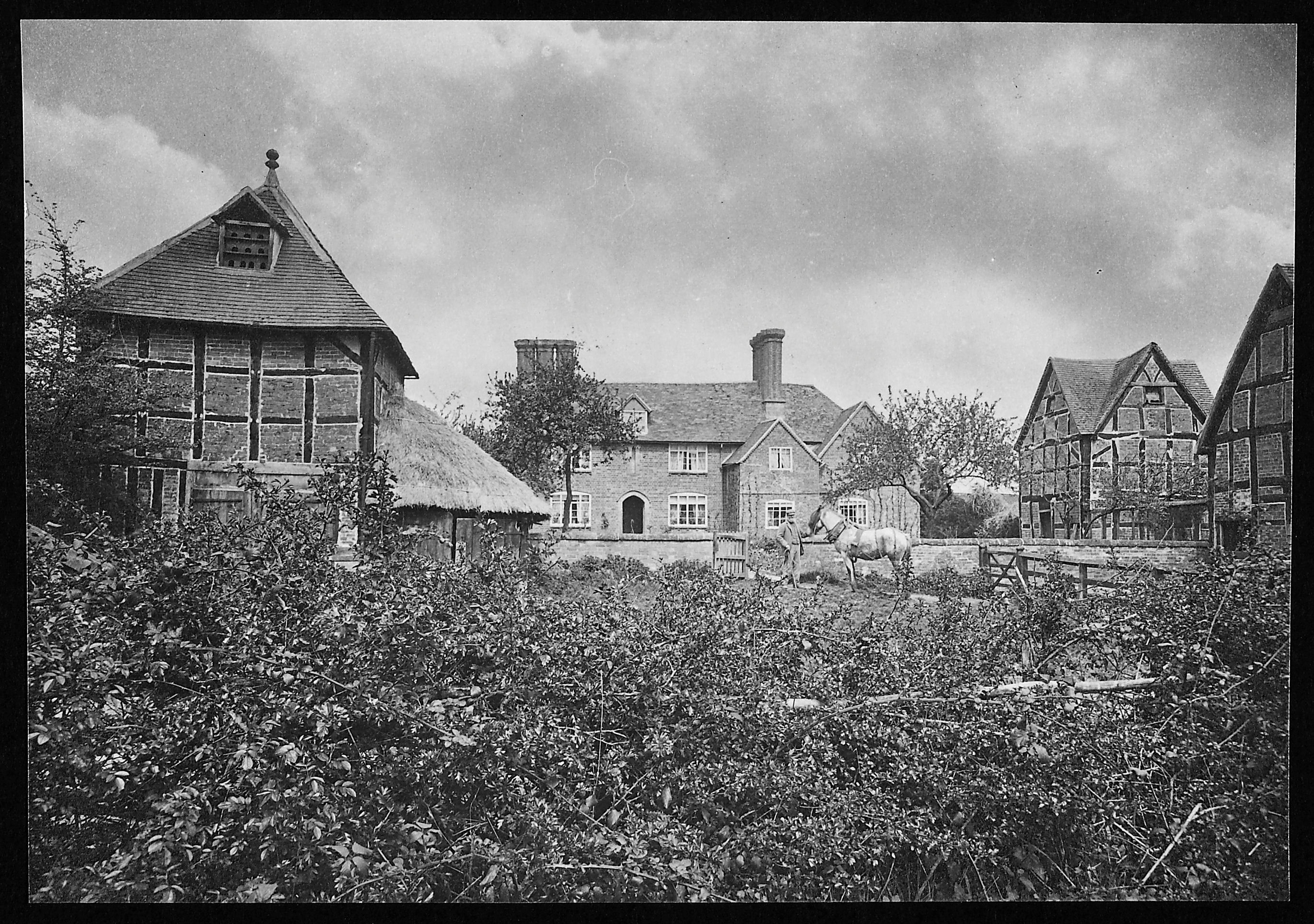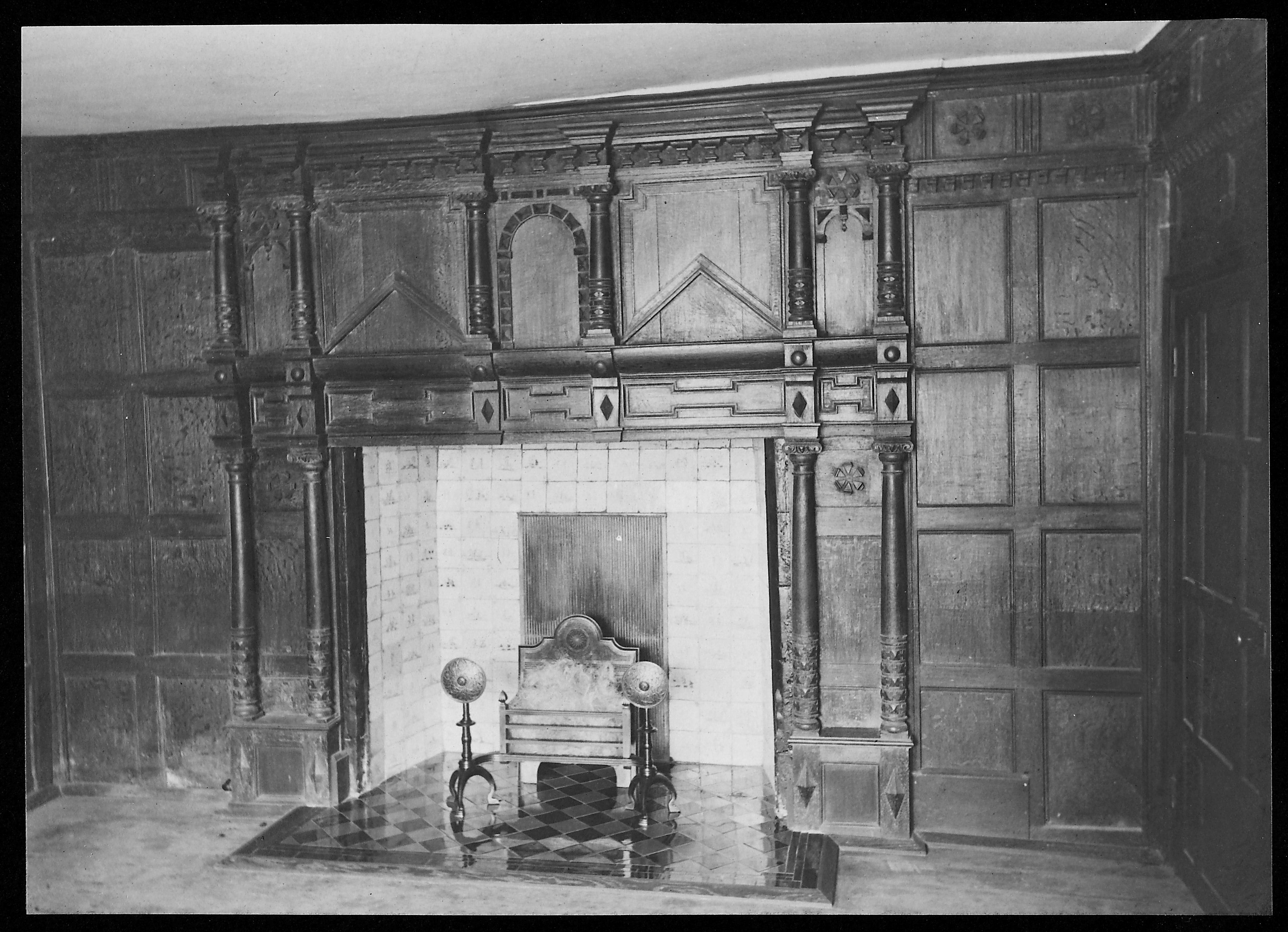Interview with Andrew H. Morton, author of tolkien's Bag End (09.07.09 by Pieter Collier) - Comments
I'm very happy to release an interview with the author Andrew H. Morton about his new book. It is my hope you will all enjoy it and learn some more about the author, his books,...
For those interested in more background about the author and his previous book you can read an interview with him about his previous book (tolkien's Gedling) here.
Interview with Andrew H. Morton about his new book tolkien's Bag End
AHM: Yes, it’s still there. From aerial photos you can see that the house substantially the same as it was in the 1920s. Bag End is owned by the Hall Jones family, and the impression I get is that they want nothing to do with the Tolkien connection. In my book I stress the point that I think this desire for privacy is perfectly natural and to be respected. As a consequence, I haven’t done any snooping, although when the leaves are off the trees you can catch a glimpse of the house from the road.
All the pictures in Tolkien’s Bag End are from the 1920s or earlier but you can get a view of it on Google maps if you want to and this will give you a view of Dormston. Dormston is a fairly unremarkable place, but there’s a pretty church there and the nearby Moat Farm, which can be seen from the road, is a fine example of timber frame construction. Bag End is bigger, but it’s true to say that it has been altered substantially over the centuries.
TL: J.R.R. Tolkien¹s Aunt Jane Neave's farm was called Bag End by the locals in Dormston, Worcestershire. Did you find out why they called it Bag End, was it like Tolkien suggested seen as a pun on "cul-de-sac" (literally "bottom of the bag")?
AHM: In historical terms, the Bag End/cul-de-sac connection is almost certainly coincidental. The name may be very old and at least pre-dates the use of the term cul-de-sac in the English lexicon. But Bag End is not just a local name –it’s the real historical name going back to at least the middle of the 18th century where it is mentioned as the area than the house itself. The real origin of the name is obscure –the “Bag” bit may be an Old English personal name, a forgotten dialect word for an animal, or to do with the agricultural practice of “bagging” – there may even be an allusion to the topography of the place. I suggest various possibilities in my book without coming to any firm conclusion. It’s certainly a very unusual name – unique as far as I can see. However, I think it is certain that Tolkien, a connoisseur of place names, made play of the Bag End/cul de sac correspondence in his fiction. He always preferred the homely English term over the pretentious French one as exemplified in the unbearable Sackville Baggins branch of the family. So, on a factual level, there’s probably no link between “Bag End” and cul-de-sac, but there is a literary significance.
TL: In a letter to K Jackson Esq (1968) we can read Tolkien tell about Bag End:
"It was the local name for my aunt's [Jane Neave] farm in Worcestershire, which was at the end of a lane leading to it and no further..." but in tolkien's books it was the starting point of two tales, was this a symbolic move by Tolkien because it had inspired him so much?
AHM: Certainly symbolic. As the starting place and the terminus of both adventures, Tolkien need something redolent of ordinary everyday life. It’s a classic feature of this kind of mythical adventure to take the hero out of his or her humdrum setting and set them on the path to extraordinary adventure. When Tolkien adopted the name Bag End, with its very ordinary homely associations, I’m sure he had this in mind. But apart from the name, I do believe that he may have seen Bag End as representing an archetypal kind of Englishness, and, what is more, one closely associated with his own Suffield family roots. When he visited for the first time, he must have felt that the Suffield family myth had eventually become real. All of them felt that rural Worcestershire was where they belonged.
TL: In the interview I conducted with you about tolkien's Gedling (here) you talked about "lots of unpublished photographic
material from the period", did you manage to find this material?
TL: Bag End was entirely made from brick and timber, are there any similarities between the real Bag End and Bilbo's Bag End as described in the Hobbit?
AHM: Most people have stuck with the safe assumption that it is primarily the name “Bag End” that Tolkien adopted into his fiction. However, having spent the best part of a year examining the real Bag End, I believe there is a good argument that certain features of the house and the surrounding countryside may well have found their way into his imagination.
TL: A few hundred yards from Bag End Farm stands (stood) a magnificent old oak.
Do you think this was tolkien's inspiration for Bilbo's party tree?
AHM: Yes, I’ve seen the picture of the Heart of England web site. Why not? We know Tolkien was a tree fanatic and this one may have caught his attention. Jane Neave mentions the magnificent elm trees around the farm and just to the north of the farm is Roundhill Wood, a survival of the ancient Feckenham Forest. Bag End would have been paradise for the tree-lover.
TL: Are there any other elements in the area of Bag End that were used as inspiration by J.R.R. Tolkien for his mythology?
AHM: I argue that the lie of the land is rather similar to the location of Hobbiton, more so really than Sarehole, which is low-lying. The names of the hamlets around there are very Tolkienian and at least we can say that Dormston is a quintessentially English place. There is a potential absurdity in claiming any specific place as an inspiration for Tolkien’s topography and I think it’s clear that his Shire is a composite of many places heightened in the bright light of his imagination. But this ancient heartland of Mercia is one that Tolkien explicitly associated with, as did the rest of his Suffield branch of the family. He may have noticed the name of Eomer’s Meadow, just a few hundred yards from Bag End, the name of the ultimate ancestor of Mercian kings, and one that he used in The Lord of the Rings. And The Mark, if Tom Shippey is right, is Tolkien’s version of the word Mercia. However, it’s also true to say that Tolkien would have known the name in this connection from Beowulf.
TL: In your research on Bag End you must have for sure found more info on Jane Neave, can we expect some more intriguing facts about her?
AHM: There are a few new details. I interviewed some older residents of Dormston about Jane, and they remember her as a well-respected member of the community, as a farmer and as president of the Kington and Dormston Women’s Institute (a typical Jane activity). But even after all these years (she left Dormston around 1948) she is a woman who clearly made a strong impression. Whenever I give talks on the subject, audiences seem to pick up on the remarkable characteristics of Jane Neave, and it’s gratifying to think I have helped to give her a little place of her own in history.
TL: Of course the question all Tolkien fans have is whether you have found some unknown information on J.R.R Tolkien in relation to Jane Neave and Bag End?
AHM: Facts concerning Tolkien and Bag End are very thin on the ground. Apart from two well documented visits, one in 1923 and the other with his family later in the decade (post Christopher, pre-Priscilla) we know nothing. There may have been only one Tolkien family visit to Bag End as Jane’s idea of domestic arrangements may have been rather different from Edith’s. I have no firm evidence for this –only hearsay- but I intuit that there may have been some slight friction between Jane and Edith, which would not have been unusual in any family setting between two powerful characters with different priorities and emotional claims on the author. I have to come clean and say that I have no photos of Tolkien at Bag End. Neither did I see any of him at Bag End in the Hilary material, although there were several at Blackminster. However, as these visits coincide with the time when Tolkien was formulating the stories that found their way into The Hobbit, I’m sure he had an image of the place in his mind as well as the name. He almost certainly discussed the name” Bag End” with Jane, who changed the name of the farm back from Dormston Manor to its earthy English alternative. It’s impossible to know which name goes back furthest in history; all we know is that Jane found the name Bag End in the deeds of the house and it appealed to her more than Dormston Manor. Even now the older residents of Dormston whom I interviewed insist that Bag End is the proper name and you can see why – it’s earthy, slightly humorous and unpretentious. It’s interesting that Jane also changed the name of Church Farm to Phoenix Farm. Names were clearly important to her. This is the kind of thing that would have appealed to Tolkien. In general terms, it seems to me that Tolkien’s visits to Jane always held the possibility of sparking off some interesting ideas. This is true of the 1911 Swiss adventure and his 1914 visit to Phoenix Farm, and, for all I know, his visits to Jane at St Andrews may well have provided him with some inspiration. Some people claim to have detected a Scottish influence in his landscapes.
TL: On the whole there has not been a lot of information available on Bag End and possibly a lot of wrong assumptions where made as well, can we see you book as the definitive guide to Bag End?
AHM: I hope so. What I hope I have succeeded in with both books is combining the Tolkien interest with some substantial local history research, and on this second point, I can’t see anyone else taking it further. As with Phoenix Farm in Gedling, most biographers mention the place in passing, for understandable reasons. This hasn’t stopped some of them making mistakes – one major biographer, for example, describes the place as a “cottage”. It’s true that Jane Neave did live in a nearby cottage from 1936/7, but Bag End is a substantial Elizabethan manor house. This kind of mistake is a symptom of the kind of Tolkien biography that depends on a simple rehash of previous work and there’s plenty of that about. I can at least claim that my two books are largely based on original historical and biographical research. I may not always be right, but at least I am not repeating the mistakes of other writers.
TL: Your last book was proof read by Wayne Hammond and Christina Scull, did they aid you this time around?
AHM: Not this time. They are extraordinarily kind and generous people, but there are limits to the amount you can presume on other people’s time. We did exchange some emails on the subject, but they didn’t edit it in the way they did with Tolkien’s Gedling. I hope I gave them a few useful titbits for their compendious guides.
TL: We all know a book about tolkien's brother Hilary is being made. Did you discover anything about him?
AHM: I was privileged to see some of this material but clearly it would not have been ethical to make use of it in my book. However, the one general impression I gained from what I saw of this material and from talking to other people on the subject of Hilary, was that he had a rather hard time of it making ends meet. Jane helped him out, and possibly helped him to buy the farm at Blackminster, but it was not a great success. I think Jane blamed herself for encouraging Hilary to go into horticulture when he could have had a steady job with rich Uncle Walter.
TL: Now that you have written Bag End can we expect a similar project in the future? Or is this your last book on Tolkien?
AHM: I think this is the last one. I’ve thoroughly enjoyed the experience of writing the books – the excitement of discovery and investigation. In their small way, I believe they have added to the sum total of Tolkien scholarship and that can’t be bad. If I find something new –who knows – but I can’t see that happening. It would have to be something material like Phoenix Farm of Bag End that had a seminal influence on Tolkien, but I can’t see what this might be. Perhaps the time Tolkien lingered too long in Nottingham’s Trip to Jerusalem pub and missed his lecture at the university! There are scholarly things still to write about Tolkien –his school life, for instance, or his connection with the Birmingham Oratory –and I know people who are writing this sort of thing to do with his Birmingham childhood and adolescence, but they are more articles than books. One I would love to see would be based on the massive amount of material Maggie Burns has researched on the Suffield and Tolkien families. But it’s hard to find a publisher for this kind of thing. Even John Garth’s wonderful research on Tolkien at Oxford ended up published in a very minor way, and this was fascinating, original first-class material. As Wayne and Christina once pointed out to me –there are many people who buy work by Tolkien, but not so many who buy work about Tolkien.
TL: One final question. Do you look forward to the Hobbit movies?
AHM: Well, Jackson and Del Toro make a formidable combination in theory. I hope this time that the return to The Shire is properly dealt with – my one criticism of the LOTR trilogy was the missing out of the harrowing of The Shire. Disappointingly, they haven’t asked me for my advice on Bag End – but then the book has only just come out. It’s available in the shops now or from Brewin Books, but should be on Amazon in the next few days.
(Tolkien’s Bag End, published by Brewin Books, author Andrew H. Morton, ISBN 978-1-85858-455-3)
Type: Paperback
Extent: 88 pages
Publisher: Brewin Books
Publication date: June 22, 2009
Language: English
ISBN-10: 1858584558
ISBN-13: 978-1858584553
- Paperback
- Publisher: Brewin Books
- ISBN-10: 185858423X
- ISBN-13: 978-1858584232
Spread the news about this J.R.R. Tolkien article:



